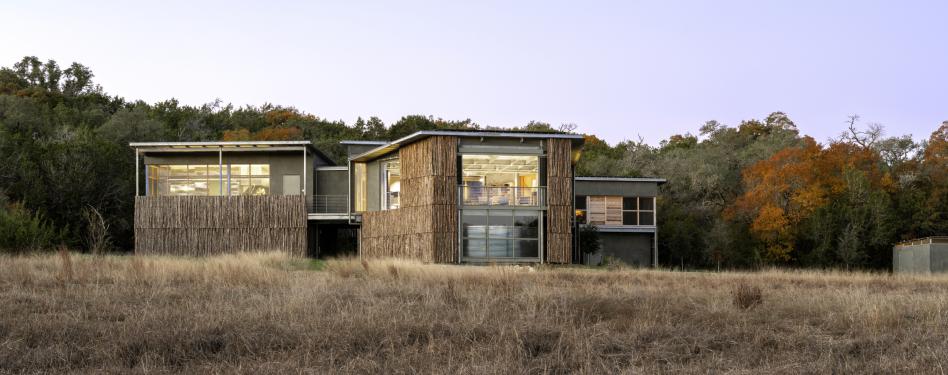
Image credit: Leonid Furmansky.
The SITES Gold Campsite at Shield Ranch, located just 22 miles from downtown Austin, Texas, serves as the new home for Camp El Ranchito, a scholarship-based overnight camp. El Ranchito started in 2007 as a primitive campsite with the mission to connect children with the natural world by providing an extraordinarily fun and inspiring nature immersion experience.
The new facilities allow for more campers and expanded programming. When camp is out of session, the site welcomes community groups, including nonprofits, businesses, and educational and youth organizations seeking nature immersion experiences to inform and enrich their programming. It also hosts scheduled programming for all ages. Shield Ranch Foundation’s Wild for Good pricing model helps to offset the usage cost for nonprofits and El Ranchito scholarships.
“The campsite demonstrates our commitment to share more broadly with our community in ways that serve groups while protecting the land for future generations,” says Andrea Mellard, executive director of the Shield Ranch Foundation. “In a rapidly urbanizing region, it’s increasingly important to provide outdoor experiences to promote health, connection and moments of wonder.”
Campers and guests spend their days exploring the surrounding landscape along Rocky Creek, a tributary of Barton Creek, where they learn about local ecology, conservation and restoration practices. At night, screened sleeping shelters provide protection from the elements while immersing visitors in the surrounding woodland and sounds such as the dawn chorus of birds and the calls of tree frogs and owls at night.

Image credit: Leonid Furmansky.
Protecting the land
The 14-acre project area was carefully sited on 131 acres at Shield Ranch, an ecologically diverse, 6,400-acre nationally designated historic district and protected wildland that comprises 10% of the Barton Creek watershed. Special steps were taken to protect the surrounding native woodland and grassland ecosystem and sensitive site features. Ninety-two percent of the project area was designated as Vegetation and Soil Protection Zones and protected with construction fencing.
Topsoil in building areas was harvested and stored for reuse on-site to reduce transportation impacts and the potential introduction of invasive species through imported topsoil. Areas of disturbance were restored with diverse native plant species and blend seamlessly into the surrounding landscape. The harvested topsoil also provides a seed bank of species native to the site and not common in commercial trade.
The sleeping shelters were designed as a kit and assembled in the field with minimal site disturbance. The shelters sit lightly on the land and are perched above grade to avoid disturbance to natural water patterns and the surrounding soils, which support a diverse native woodland plant community.
Campsite trails served as construction pathways and were limited to small, low-impact construction equipment to minimize soil compaction and damage to plant roots. All construction was conducted with equipment with tier-4 engines to reduce emissions of localized air pollutants and greenhouse gases.

Image credit: Leonid Furmansky.
Water and energy conservation
Designed by Andersson/Wise and Ten Eyck Landscape Architects, constructed by Hill & Wilkinson General Contractors, and consulted by Regenerative Environmental Design, the campsite is 100% off-grid. It comprises an open-air pavilion, 11 screened sleeping shelters, a trail system and outdoor gathering spaces. Some conservation highlights include
- Being the first public water system approved by the Texas Commission on Environmental Quality (TCEQ) that relies entirely on rain water to serve its guests.
- Being the first on-site septic facility permitted by TCEQ in Texas to use evaporative toilets.
- Having 198 solar panels and 200 kWh of battery storage.
Campers and guests play an integral role in conserving renewable resources each day. Rainwater showers are set on timers. Energy and water usage is monitored and shared with campers, guests and staff to emphasize the importance of conservation.
